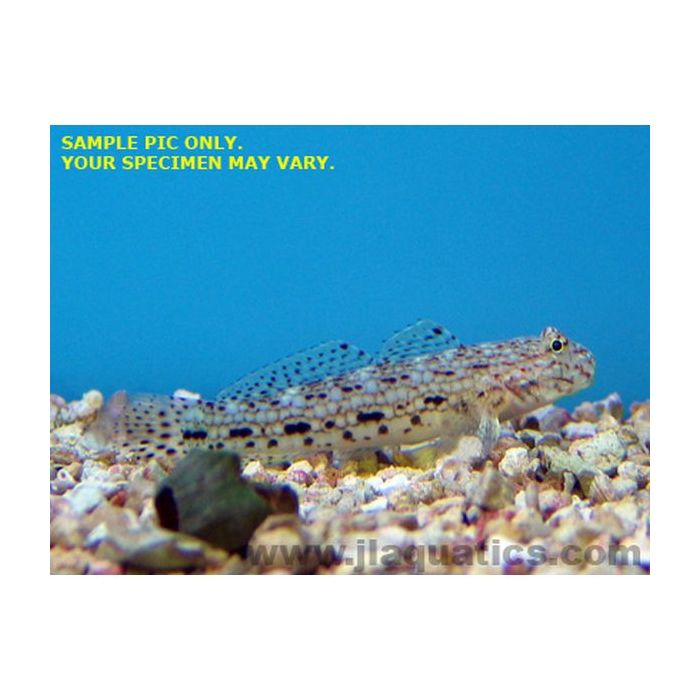Decorated Goby (Asia Pacific)
The Decorated goby is aptly named- it is covered in countless intricate spots, as if it were covered in confetti. Against its creamy colored body these spots, which may be deep rusty red to twinkling turquoise, create a fish which is definitely fun to look at. Along its flank are a few larger, bolder dark markings shaped like rectangles which distinguish it from other similar gobies. It is typically imported from the Indian Ocean. Males and females are visually identical. It grows up to 5 inches; we recommend an aquarium 30 gallons or larger.
They are a part time sand sifting fish, helping to keep the sand looking clean and free of debris while also consuming small micro-fauna. They do not typically lift sand to cover rocks or corals.
Sand gobies are small, peaceful fish which spend most of their day hopping around on the substrate in an entertaining manner. A fine sand bed of at least two inches will help them feel secure.
We recommend the tank be securely covered as sand dwelling gobies may be prone to jumping from open top aquaria. They may be territorial to others of the same or similar species, however if two fish are added to a sufficiently large aquarium at the same time it may be possible to keep a pair. They are typically peaceful with all other types of fish.
Sand gobies are primarily carnivores and their diet should include plenty of high quality meaty items, marine algae, Spirulina, and frozen Mysis shrimp. It is preferable to feed more than once a day and to let some food land on the bottom of the aquarium. Frozen food is best, however in time they usually learn to eat dry foods.
As one of the largest families of fish there are near countless varieties of gobies which inhabit every different niche on the reef. They are coral safe and typically quite active and friendly with other fish. They have the ability to change sex to form pairs, although they don't always do so. Most gobies are imported from the Philippines.
Gobies are diminutive fish typically with elongated bodies, and as such we do not recommend any aggressive or large-mouthed fish to be kept with them; this includes all groupers, snappers, sweetlips, soapfish, lionfish, eels, goatfish, anglers/frogfish, leaf fish, etc.





